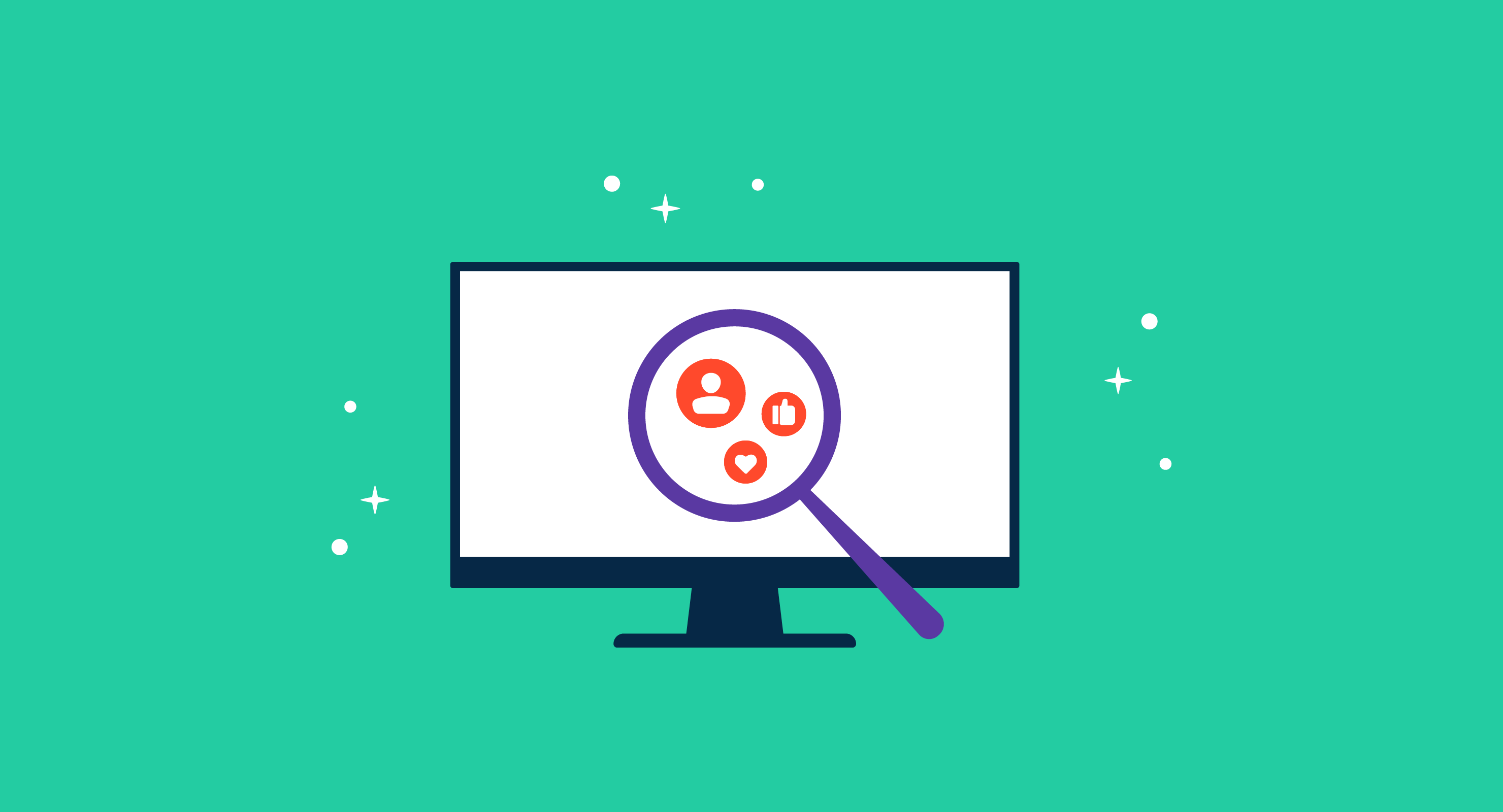What is audience analysis?
Audience analysis allows marketers to derive key insights about the consumer base in the total available market with the help of real-time data extracted from various online sources. This practice helps businesses identify, plan, and execute marketing campaigns and strategies to create credible market value. With audience analysis, marketing teams can map out content and promotional strategies and also conduct persona profiling.
Since audience analysis requires a lot of data to be interpreted, it’s recommended that businesses utilize audience intelligence software. This software helps marketers optimize their audience-building efforts and gain a 360-degree view of their target audience quickly and consistently.
Audience analysis tools collect and interpret online data to help organizations achieve a deeper understanding of their consumer base. With this data, marketers can execute audience segmentation, perform market research, and guide decision-making. By leveraging artificial intelligence, big data, and machine learning, these tools can analyze social data and provide continuous audience insights.
Types of audience analysis
Audience analysis can be broadly broken down into the following types:
- Socio-demographic analysis: Socio-demographic analysis looks at the age range, ethnicity, and socioeconomic status of a particular audience. These factors form the first layer of any individual’s characteristics.
- Psychographic analysis: Psychographic information focuses on the audience's attitudes, aspirations, and interests. By studying behavioral attributes, marketing teams can grasp the target audience’s psyche and cater to those feelings.
- Geographic analysis: Geographic factors look at the location and region that a particular group resides in. Different areas give rise to cultural groups. How these groups perceive regional trends can be assessed using an audience analysis exercise.
- Competitive analysis: This is where organizations glean insights on their competitors’ value proposition, what their customers like about their product, and any gaps that could be filled.
- Media analysis: Businesses can discover which platforms and media sources their target audience uses for information. Understanding what content their consumer base follows helps marketers connect with their customers better.
Benefits of audience analysis
Audience analysis empowers marketers to make accurate decisions in real time for matters ranging from content strategy and PR to product creation and brand marketing. Here are some of the key benefits of audience analysis:
- Create promotions that resonate: Marketers don’t have a limitless budget at their disposal. Advertisements and campaigns need to see a justifiable ROI. Audience analysis allows marketers to access their audience’s interests and pain points accurately, and use that information to fuel their next campaign.
- Increase your reach: With audience analysis, marketers can view the channels their target audience interacts with the most and engage with them accordingly. Beyond social media networks, marketing teams can also figure out the type of media that appeals to their consumer base, where they consume their content from, and how they perceive brands.
- Attract new customers: Audience analysis allows marketers to peer into competitors’ audiences. Marketing teams can gain powerful insights into how these competitors engage with their audiences, what kind of messaging and content works for their campaigns, and reveal what doesn’t work.
- Save time: Audience analysis eliminates the need for long-drawn processes that involve collecting data and later analyzing them. Coupled with an audience analysis software, marketers have actionable insights at their fingertips, which help them understand their consumers in a matter of minutes.
- 360-degree view of the customer: The data businesses get from audience analysis isn’t subjective or biased. Interactions with different platforms, activity on ancillary sites, or even location information are all accounted for through audience analysis. Marketers can make decisions based on the real-time data that audience analysis provides.
Basic questions to answer in the audience analysis process
Marketers can embrace an audience-centric approach in their campaigns and messaging with the help of audience analysis. Combined with an audience analysis tool, businesses can optimize marketing strategies by improving the return on investment (ROI) of paid online campaigns. Audience analysis answers many questions related to strategizing and executing advertising campaigns like:
- Which targeting criteria will ensure optimum visibility within the audience?
- What kind of campaigns are competitors launching, and which of these work best across audiences?
- What kind of themes or subjects trend the most amongst different target groups?
- What platforms do audiences engage with the most?
Steps to perform an audience analysis
Once businesses have set their goals for each marketing campaign and strategy, the next step is to embark on an audience analysis exercise. Here are six steps that companies can follow to perform audience analysis:
- Identify the audience: Identify the potential audience that’ll align with the business’s goal. Set criteria to ensure that the right set of people are being covered.
- Observe audience traits: Analyze the different characteristics of the audience and classify them based on their psychographic, demographic, or behavioral traits.
- Perform situational analysis: Assess what situational factors influence behavior changes within your target audience.
- Determine obstacles: Uncover which elements could act as barriers for individuals and prevent them from exhibiting the desired behavior. Likewise, identify what facilitators encourage the audience to behave favorably.
- Perform segmentation: Once the target audience and their characteristics have been identified, group individuals who exhibit similar traits into well-defined segments. Each segment determines what marketing strategy must be adopted.
- Initiate profiling: Create audience profiles for each segment with the help of storytelling. Add information from the previous steps like audience traits, barriers, influencers, and facilitators to form a robust user persona.
Audience analysis vs. market research
Audience analysis gathers information from any online source. It’s not limited to a set of questions and hypotheses. Audience analysis tools give businesses direct access to actionable insights. Unlike the data gathered in market research, audience analysis provides real-time data that’s objective in nature. Audience analysis empowers market research with quick and accurate information.
Market research is often a long-drawn process that involves several steps. It requires time and commitment to identify the market opportunity to explore, create a research plan, collect data, and subsequently analyze it. The data collected from market research is subjective in nature since most of it is obtained from user surveys and questionnaires. Additionally, data gathered during a market research exercise is quite specific. It can only answer questions that have been formed during the hypothesis stage of the research.

Ninisha Pradhan
Ninisha is a former Content Marketing Specialist at G2. She graduated from R.V College of Engineering, Bangalore, and holds a Bachelor's degree in Engineering. Before G2, Ninisha worked at a FinTech company as an Associate Marketing Manager, where she led Content and Social Media Marketing, and Analyst Relations. When she's not reading up on Marketing, she's busy creating music, videos, and a bunch of sweet treats.



















